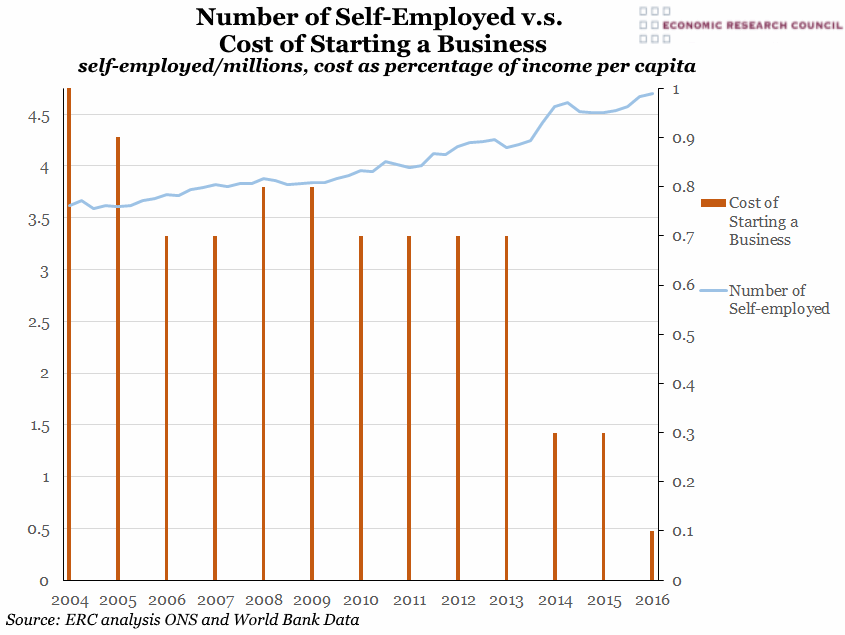Week 9, 2017: Number of Self-Employed v.s. Cost of Starting a Business
Summary: The chart shows that a correlation exists between the number of people taking up self-employment and the cost of starting a business in this country. The cost of starting a business has fallen significantly, with a tenfold reduction between 2004 and 2016. Self-employment has risen modestly since 1994, however in recent years far fewer people leave self-employment. While the growth in self-employment may have been accelerated by the recession in 2008, the trend predates this. A relatively large jump in number of self-employed people can be seen in 2013. This could be related to the 2013 extension of the ‘New Enterprise Allowance’ widening access to the scheme, which provided a weekly allowance plus a loan of up to £2k alongside business mentoring. Additionally people may have found an incentive to either declare themselves, or remain as self-employed on low income, in favour of becoming unemployed, in order to claim tax credits following toughening of Jobseeker’s Allowance sanctions in 2012.
What does the chart show? The orange bars show the cost of starting a new business as a percentage of income per capita according to the World Bank’s Doing Business report. It is yearly from 2004 until 2016 and measured against the right hand axis. The blue line, measured on the left hand axis shows number of self-employed individuals. The data is quarterly, in millions, and runs from Q1 2004 to Q1 2016.
Why is the chart interesting? The overall trends of rising self-employment and the reduction in associated cost, is likely related to the development and accessibility of technology; including platforms such as Ebay, Deliveroo and Uber. These platforms cheaply and easily match the self-employed with their customer base. Demographic changes, particularly rising life expectancy have also encouraged older workers into freelance employment beyond traditional retirement age.
Some are critical of the tax structure for the self-employed, which allows them to pay tax only on net income. Self-employed individuals earn less on average than those employed. Rising VAT and excise duties also create a greater appetite for ‘grey economy’ transactions, which involve legal goods and services but are conducted illegally, beyond the reach of the taxman. All of this, has implications for tax revenue and the welfare bill, making the self-employed a target for the chancellor. It remains to be seen whether Philip Hammond’s latest tax hike will make self-employment less attractive or indeed if it will be a measure that alienates traditional conservative voters, those upholding the Thatcherite ideals of enterprise and self-reliance.





 Thursday, March 9, 2017 at 6:53PM
Thursday, March 9, 2017 at 6:53PM